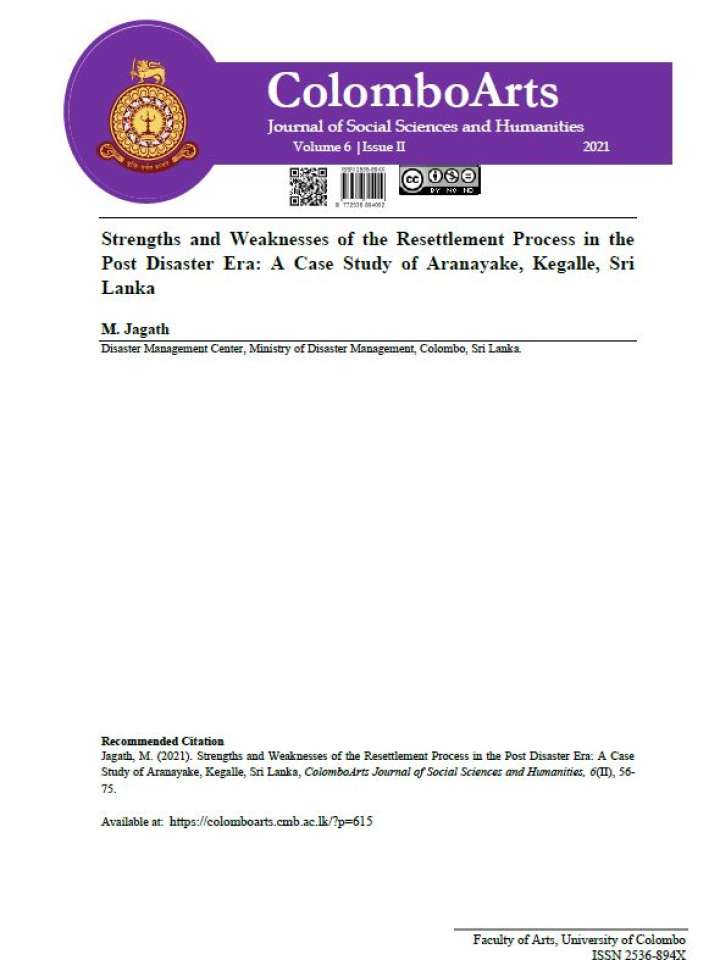Strengths and weaknesses of the resettlement process in the post disaster era: a case study of Aranayake, Kegalle, Sri Lanka
This paper discusses, in the form of a case study, the resettlement process of Aranayake that took place in 2016. In Aranayake, 512 families have resettled at ten relocation sites or at their own residences. This study explores the strengths and weaknesses of this resettlement process via interviews of government officials, selected families, and other stakeholders. Many expressed displeasures at their living conditions after resettlement. However, some respondents were satisfied as they had easy access to basic needs and were free of landslide risks.
The study also explores the local and international donors’ contributions to internally displaced people (IDPs). The findings show that the resettlement process did not adequately address the requirements of the displaced community. In the post-disaster era, families who resettled have experienced a deterioration in their socio-economic status. However, the newly introduced financial schemes for IDPs was identified as a strength of the resettlement process. Hence, this study proposes the adoption of globally accepted resettlement attributions, which may enable sustainable restitution for displacement in Sri Lanka.
Explore further
